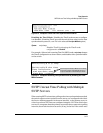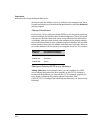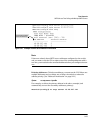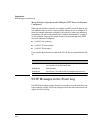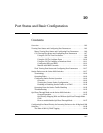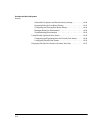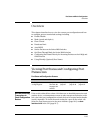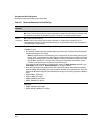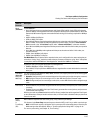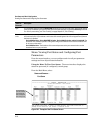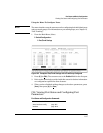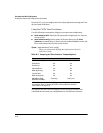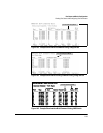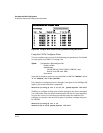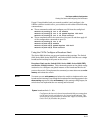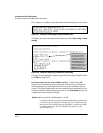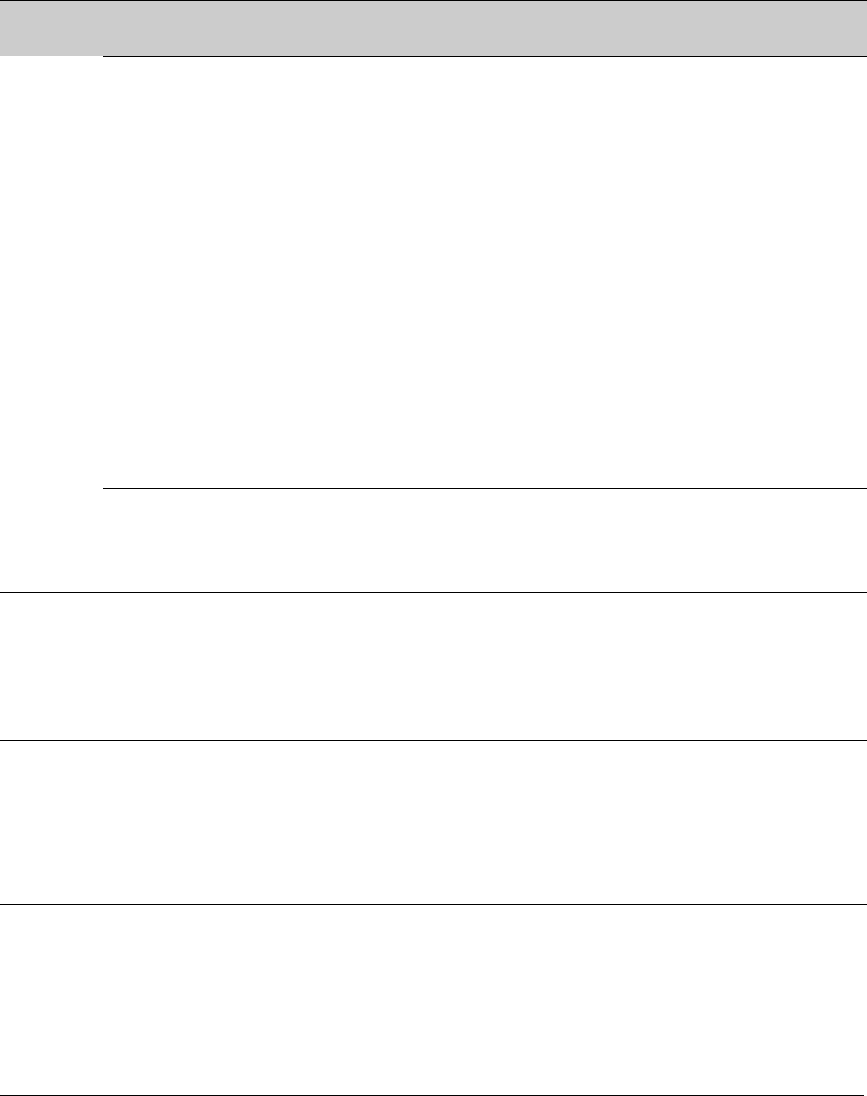
Port Status and Basic Configuration
Viewing Port Status and Configuring Port Parameters
Status or
Parameter
Description
Mode
(Continued)
10/100/1000Base-T:
• Auto-10: Allows the port to negotiate between half-duplex (HDx) and full-duplex (FDx) while keeping
speed at 10 Mbps. Also negotiates flow control (enabled or disabled). HP recommends Auto-10 for links
between 10/100 autosensing ports connected with Cat 3 cabling. (Cat 5 cabling is required for 100 Mbps
links.).
• 10HDx: 10 Mbps, Half-Duplex
• 10FDx: 10 Mbps, Full-Duplex
• Auto (default): Senses speed and negotiates with the port at the other end of the link for port operation
(MDI-X or MDI). To see what the switch negotiates for the Auto setting, use the CLI show interfaces
brief command or the “ 3. Port Status” option under “1. Status and Counters” in the menu interface.
• Auto-100: Uses 100 Mbps and negotiates with the port at the other end of the link for other port operation
features.
• Auto-1000: Uses 1000 Mbps and negotiates with the port at the other end of the link for other port
operation features.
• 100Hdx: Uses 100 Mbps, half-duplex.
• 100Fdx: Uses 100 Mbps, Full-Duplex
Port Mode Notes: Ensure that the device attached to the port is configured for the same setting that you
select here. If using “Auto”, the device to which the port connects must also be using “Auto” and operate
in compliance with the IEEE 802.3ab “Auto Negotiation” standard for 1000Base-T networks.
Gigabit fiber-optic ports (Gigabit-SX, Gigabit-LX, and Gigabit-LH):
• 1000FDx: 1000 Mbps (1 Gbps), Full Duplex only
• Auto (default): The port operates at 1000FDx and auto-negotiates flow control with the device connected
to the port.
Auto-MDIX
The switch supports Auto-MDIX on 10Mb, 100Mb, and 1 Gb T/TX (copper) ports. (Fiber ports and 10-gigabit
(2600, 2600-
ports do not use this feature.)
PWR, and
• Automdix: Configures the port for automatic detection of the cable type (straight-through or crossover).
2800 Only)
• MDI: Configures the port for connecting to a PC or other MDI device with a crossover cable.
• MDIX: Configures the port for connecting to a switch, hub, or other MDI-X device with a straight-through
cable.
Flow Control • Disabled (default): The port does not generate flow control packets, and drops any flow control packets
it receives.
• Enabled: The port uses 802.3x Link Layer Flow Control, generates flow control packets, and processes
received flow control packets.
With the port mode set to Auto (the default) and Flow Control enabled, the switch negotiates Flow Control
on the indicated port. If the port mode is not set to Auto, or if Flow Control is disabled on the port, then Flow
Control is not used.
Group
Menu Interface: Specifies the static trunk group, if any, to which a port belongs.
(menu)
or
CLI: Appears in the
show lacp command output to show the LACP trunk, if any, to which a port belongs.
Trunk Group
Note: An LACP trunk requires a full-duplex link. In most cases, HP recommends that you leave the port
(CLI)
Mode setting at Auto (the default). Refer to “Trunk Group Operation Using LACP” on page 12-18.
For more on port trunking, see Chapter 12, “Port Trunking” .
10-5



